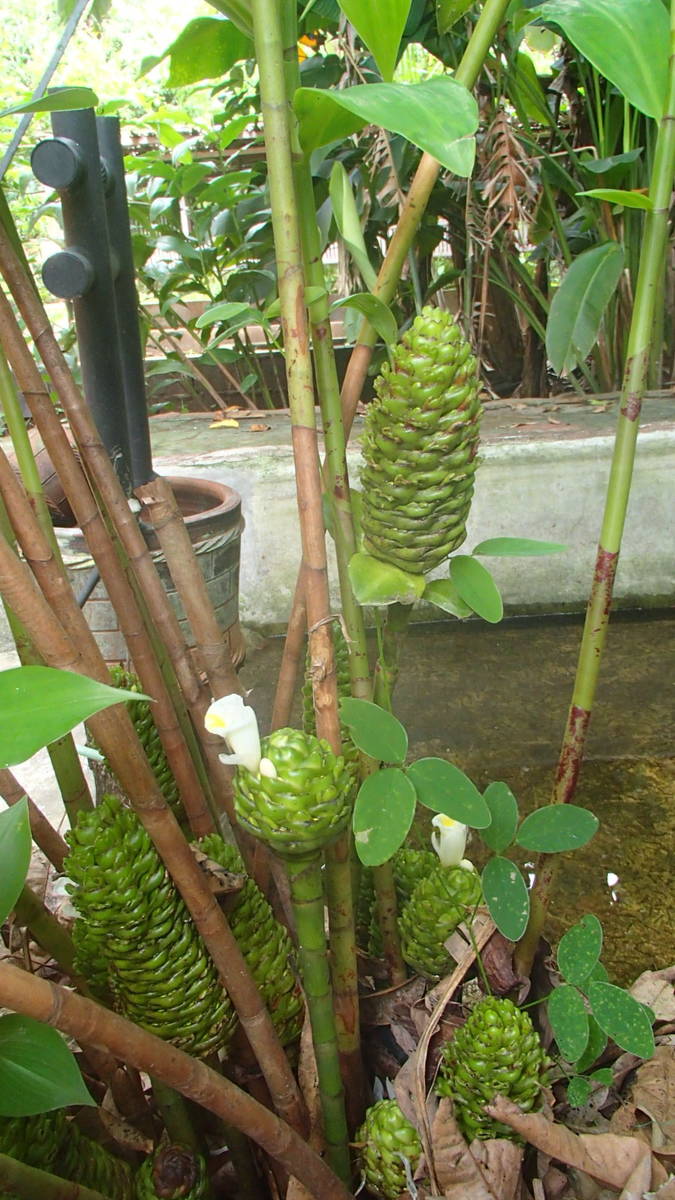‘Exotic’ plants are difficult to grow in Southern Nevada
The gardening trend seen most often now is growing plants we might call “exotic” to the Mojave Desert environment. Exotic might simply be anything that doesn’t naturally grow here, or it could mean plants extremely difficult to grow here.
But as we try to grow these exotics more and more, it requires more effort and money on our part to ensure their good health. Is it worth the effort and cost? Only the homeowner who decides to grow it here can answer that.
Perhaps the first plants to get this moniker are the semitropical citrus. Some citrus like grapefruit, Meyer lemon and kumquat grow better here than others such as lime and navel orange. The major limitation to growing productive citrus here is our winter freezing temperatures and early spring frosts.
In warm landscape microclimates, they perform well, and that gives us widespread hope and fuels their sales. But other exotics such as the neem tree, cereus cacti and moringa tree have surged in popularity more recently.
What are the limitations that affect the growth and survivability of these exotics? The winter freezing temperatures and spring cold snaps are the first hurdle. Then there are the high temperatures and low humidity of our summers. And strong winds intensify our high temperatures and low humidity.
Next is our intense and damaging sunlight. These are some reasons why the old realty adage “location, location, location” is so important when selecting and placing landscape plants.
Lastly are our soils. If you read my advice here and my blog, you know our soils can be problematic for most plants. Primarily because of its low organic content, our soils can be excessively alkaline and suffocate plant roots with their infamous poor drainage problems.
Once organics like compost are mixed with the soil and water is added to this mixture, most problems are corrected. If it’s a good compost, very seldom is anything more needed. If the compost added every one or two years is rich and full of nutrients, then additions of extra fertilizer are seldom needed.
Plants that are exotic for this climate can include those that need special attention from us such as planting in a specific location in the landscape or added protection, soil amendments that improve the soil or its drainage and avoidance of extreme temperatures and intense sunlight. But exotic plants can also include those that can grow well in our climate and soils but just aren’t tried here as much.
Success growing these exotics requires that you do some homework and learn about their potential climate and soil limitations. The one thing you shouldn’t do is assume that if it’s sold here, it will grow here. It would be better to assume if it’s sold here, it might grow here.
Q: I want to grow dragonfruit in Las Vegas. Will it grow here and how do I do it if it does?
A: Yes it will. But it will need lots of your help to grow successfully and produce fruit here. There are several hurdles in its way you must help it surmount.
First, dragonfruit originated from tropical Central America. It may be a cactus, but it’s a tropical cactus, classified as a pitaya type because it produces a ball of edible fruit from the flowers. This means it must always be protected from freezing temperatures to survive.
Not only that, new growth and fruit are damaged at temperatures near refrigeration, 40+ degrees, so it’s best not to fertilize it after June 1, and you need to protect any fruit present from cold when temperatures dip into the low 40s.
Cold protection might include moving it to a warmer location or protecting it with a hoophouse or greenhouse. Otherwise, it will not survive here for very long.
Other pitaya-type cactus include the Mexican nopal cactus (types of Opuntia or beavertail cacti) from Central America and the night-blooming cereus cactus (sometimes called the Peruvian apple cactus). Both are considered subtropical, so they might need protection from winter cold at times.
Like some other pitaya-type cactus, its flowers bloom only at night and only once, so some varieties of dragonfruit may need hand pollination to produce fruit.
Dragonfruit is a natural climber, sometimes called an epiphytic type of cactus. This is why commercial producers train the plant to climb posts to facilitate its flowering, pollination, spraying and harvest.
Though dragonfruit is a cactus, it prefers to grow in moist, rich amended soil full of organics with protection from intense sunlight, another of its environmental hurdles here. For these reasons, avoid growing it on the west or south sides of a structure. It would be easier to stake and grow it in a 15-gallon nursery container, so it can be moved to a warmer spot when temperatures threaten it.
Q: I read your post on your Xtremehorticulture blog regarding growing saffron in the desert. I want to grow saffron to sell to higher-end restaurants and stores. Do you have any information on growing and marketing it here in the Southwest?
A: Ours is a good climate and soil for growing this high-quality relative of a fall-flowering crocus. Our climate frequently doesn’t rain in the fall during harvest when flowers are open.
Saffron grows in full sun, handles both the cold and the heat, requires little water and little fertilizer and requires small amounts of soil improvement. The problem with saffron is not with growing it here but the tedious labor needed to harvest it over a very short period of time. For those reasons, it’s ideally suited for backyard small-scale production in our climate.
Start with good bulbs (actually corms, but we call them bulbs) and plant them in prepared beds in late April or May. Bulbs with the best genetics come from Iran, which accounts for about 75 percent of world production.
Bulbs a minimum of 3/8 inch in diameter will produce flowers the first fall. Smaller bulbs need to reach this size before they start flowering. Regular irrigation, fertilizer applications, abundant sun, weeding and soil improvement cause these bulbs to grow and multiply the fastest.
Harvesting the expensive threads (male pollen-producing stamens) from inside the flower is done during the early morning hours with supplemental lights and while still dark. This is the coolest time of the day, and harvesting when it’s dark and cool produces the highest quality saffron.
Harvest time is a narrow window during the fall when the flowers are open. High-quality saffron threads are dark in color and very aromatic. Saffron should be stored in the dark in a sealed container for best quality.
Q: I want to grow turmeric and ginger in Las Vegas. When is a good time to plant them?
A: You realize these are beautiful tropical plants that produce rhizomes like an iris. They produce beautiful flowers and foliage.
Unlike iris, which is not tropical, you have a narrower window to grow them. This growth window is closer to seven or eight months long.
Also, unlike iris, ginger and probably turmeric (turmeric is a type of ginger) are damaged at temperatures below 45 degrees. For many reasons I would suggest you look at growing them in containers and moving them to a warmer location if temperatures head in that direction. These plants grow well in the heat but not when it gets cold.
A second problem growing them here is light — as much as possible but not too intense. Plants that flower always need lots of light. Shade plants don’t flower much. They need lots of light but not the intense light of the desert. For this reason, they will grow well with about 30 percent shade cloth
They should always be outside when temperatures permit. That means moving them back and forth from an area protected from cold temperatures to the outside when temperatures are above 45 degrees.
Bob Morris is a horticulture expert and professor emeritus of the University of Nevada, Las Vegas. Visit his blog at xtremehorticulture.blogspot.com. Send questions to Extremehort@aol.com.





























